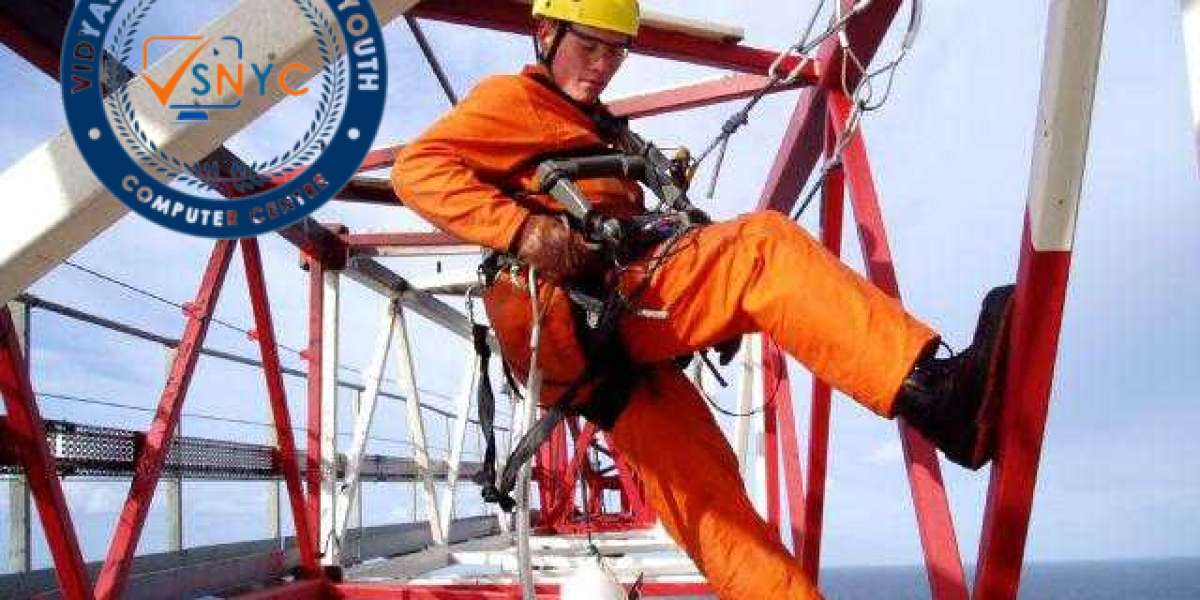Work at height training is a mandatory and life-saving safety program for employees who perform tasks at elevated positions. Whether you’re in construction, maintenance, telecommunications, or any industry involving ladders, scaffolds, or rooftops, this training is not just a legal requirement—it’s a vital component in protecting workers from one of the leading causes of workplace injuries: falls from height.
In this blog, we’ll explore everything you need to know about work at height training, including its importance, key components, who needs it, and how to get certified.
Why Work at Height Training Matters
Falls from height remain one of the top causes of fatal workplace injuries across many industries. According to global occupational health and safety reports, most fall-related accidents happen due to poor training, lack of hazard awareness, or improper use of safety equipment.
Work at height training equips employees and employers with the skills and knowledge required to identify potential fall hazards, follow proper safety procedures, and use fall protection systems correctly. This proactive approach not only prevents accidents but also helps companies comply with legal and regulatory requirements.
Who Needs Work at Height Training?
Work at height training is essential for any employee or contractor who:
Works on ladders or scaffolding
Performs tasks on rooftops or elevated platforms
Engages in window cleaning at heights
Uses mobile elevating work platforms (MEWPs)
Conducts maintenance work on towers, bridges, or tall structures
Supervisors, safety officers, and project managers overseeing such operations also benefit from understanding proper protocols and regulations.
Legal Requirements and Standards
In most countries, safety regulations require employers to ensure their workers are competent to work at height. For example, in Canada, the Occupational Health and Safety Act (OHSA) mandates that workers must complete an approved working at heights training program before performing tasks above ground level.
Failure to comply can result in severe fines, project shutdowns, and even criminal charges in the event of an injury or fatality. Certified training helps employers meet compliance and foster a culture of safety.
Key Elements of Work at Height Training
Work at height training programs typically include both theoretical and practical components. Here's what a comprehensive course usually covers:
1. Hazard Identification
Learn to assess environments for potential fall hazards including unguarded edges, fragile surfaces, and improper ladder positioning.
2. Legislation and Responsibilities
Understand workplace laws, the role of employers and workers, and how to meet compliance standards.
3. Fall Protection Equipment
Get hands-on experience with safety harnesses, lifelines, guardrails, anchor points, and personal fall arrest systems (PFAS).
4. Safe Work Procedures
Learn how to plan and organize tasks at height safely, use ladders correctly, and inspect equipment before use.
5. Emergency Rescue Planning
Be prepared for rescue situations. Training includes planning for and executing emergency rescues without compromising safety.
6. Risk Assessment and Control Measures
Gain the ability to evaluate job sites, reduce risks, and implement fall prevention strategies tailored to specific tasks.
How Long is Work at Height Training Valid?
In most regions, the certification for work at height training remains valid for 3 years. However, refresher courses are often recommended annually or if an employee changes roles, works with new equipment, or after any worksite incident.
Choosing the Right Training Provider
Selecting a reliable and accredited work at height training provider is crucial. Look for the following:
Certification by local health and safety authorities
Experienced instructors with industry expertise
Practical hands-on sessions in addition to classroom learning
Customized courses for different industries
Positive reviews and testimonials
Whether you prefer in-person workshops or online modules, make sure the course meets your workplace’s specific needs and compliance requirements.
Benefits of Work at Height Training
Investing in work at height training offers numerous advantages for both employers and workers:
Fewer accidents and injuries
Lower insurance premiums
Improved workforce confidence and morale
Stronger legal compliance
Increased productivity through safer practices
By empowering employees with the right knowledge and skills, businesses can significantly reduce downtime and legal liabilities associated with workplace incidents.
Common Misconceptions About Working at Heights
Many employers and workers assume that working on a short ladder or low platform doesn’t require training. However, even a fall from just 2-3 meters can cause serious injuries.
Another misconception is that only those working on roofs or scaffolds need training. In reality, anyone who performs tasks off the ground—like hanging signage or fixing lights—should undergo work at height training to ensure safety.
Conclusion: Protect Lives with Proper Training
Work at height training is more than just a compliance requirement—it's a powerful preventive measure that can save lives. Whether you're a construction company, a facility maintenance team, or an individual contractor, ensuring that everyone on the job has undergone proper training is non-negotiable.
Don't wait until an accident happens to take action. Contact us today! Let us help you implement certified work at height training programs tailored to your team’s needs and industry standards.








